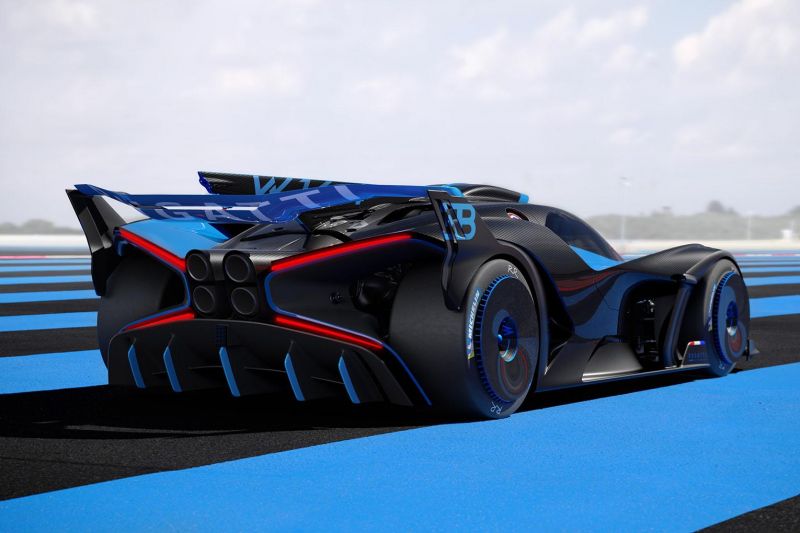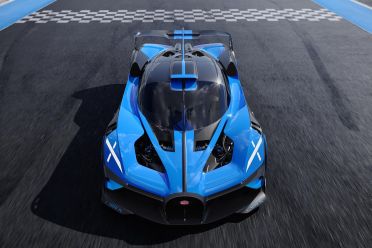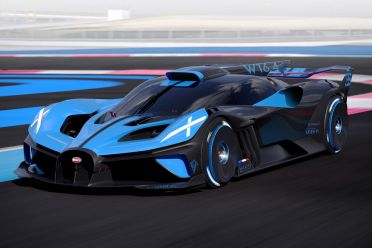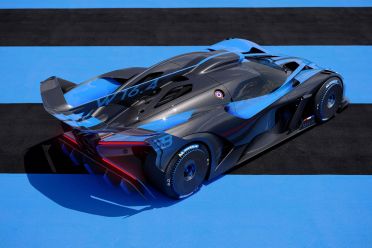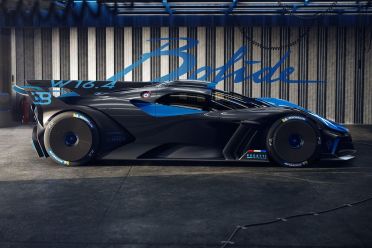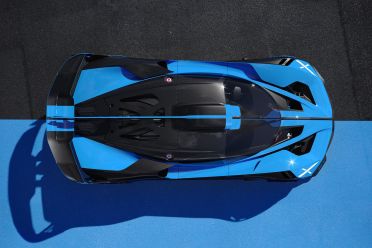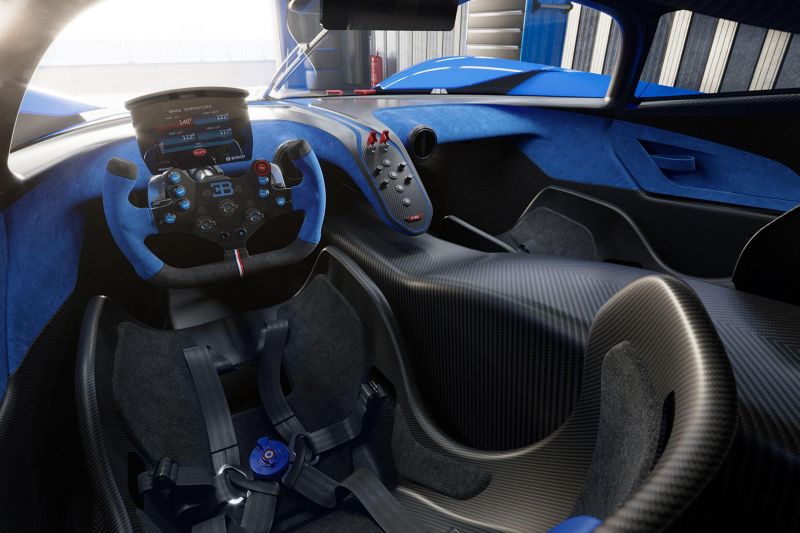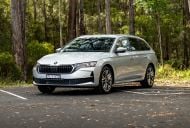Freed from the need to conform with road-going regulations and concerns, Bugatti’s engineers have come up with the most extreme interpretation of the Chiron platform.
The Bugatti Bolide was designed to have “minimal body for maximum downforce”, the highlight being the roof intake scoop’s morphable outer skin, which at low speeds is nice and smooth.
As velocity increases, the skin’s bubble field bulges out to reduce drag by 10 per cent and decrease lift by 17 per cent. This design also improves air flow to the rear wing, which at 320km/h generates 1800kg of downforce.
Powering the Bolide is the most powerful version of the company’s 8.0-litre quad-turbo W16 engine. Rated at 1360kW and 1850Nm, the Bolide’s W16 has 184kW more power than the one used in the Chiron Super Sport.
These figures are achieved using 110 octane racing fuel. With more readily available 98 octane petrol, power drops to 1193kW, or just 17kW more than the Super Sport.
Changes to the engine include turbos with redesigned blades, and dethrottled intake and exhaust systems to improve responsiveness.
There’s also air-to-air intercooling systems with pre-cooled water, and an oil setup, including a dry sump pump, designed to handle the car’s high centrifugal forces.
In order to reduce the car’s dry weight to 1240kg, the Bolide uses only titanium screws and fasteners, as well as polycarbonate windows, and hollow and thin-walled titanium alloy components, some of which are made on a 3D printer.
By comparison, the road-going Chiron has a kerb weight just a few kilos shy of two tonnes.
According to Bugatti’s simulations, the Bolide has a top speed “well above” 500km/h. The car should in theory take only 5:23.1 minutes to complete a lap of the Nürburgring Nordschleife.
The current production car record holder, the Lamborghini Aventador SVJ, needs 6:44.97 to complete the famed track.
The Bolide’s unique body and carbon-fibre monocoque stands just 995mm tall, is 1.99m wide, and sits on a longer 2.75m wheelbase.
It rides on a push rod suspension setup featuring horizontal dampers with oil reservoirs inside. Stopping ability comes courtesy of a ceramic brake system with lightweight calipers.
The centre-locking forged magnesium wheels are paired with wide 340mm tyres at the front, and 400mm units at the rear. For reference, the Chiron has 285mm width tyres up front, and 355mm rubber out the back.
A compressed-air jack system with four rams allows for speedy tyre changes.
To enter the cabin, the driver and passenger need to lift up doors that are hinged up at an angle, and then sit on the car’s 70mm-wide sills before wriggling in.
The stripped back cabin has plenty of exposed carbon-fibre on the doors, sills, seats, and centre tunnel. Compliant with FIA racing regulations, the Bolide has an automatic fire extinguisher system and two seats with six-point harnesses.
Ahead of the driver is a digital display and a track-ready steering wheel. The pedals and passenger foot rest can be moved 150mm fore or aft.
Bugatti says it “has not been decided yet” whether the Bolide will go into production.



